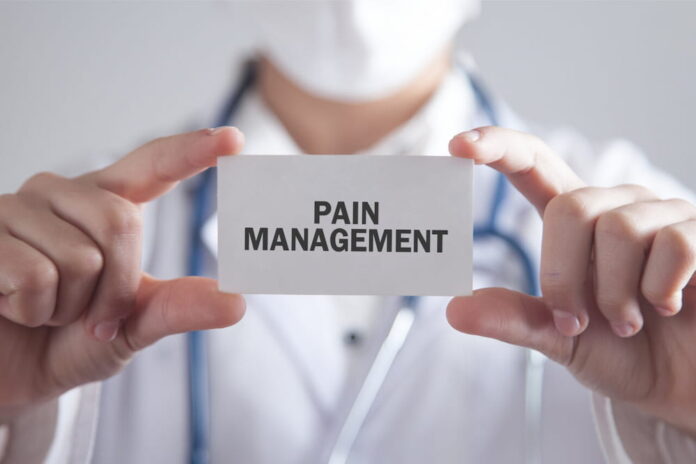Anesthesiology, traditionally seen as a field focused on managing pain and consciousness during surgery, has expanded far beyond the operating room. Today, anesthesiologists are at the forefront of pioneering innovations in pain management that benefit patients across various medical settings. Their expertise is not only essential during surgical procedures but also plays a critical role in advancing approaches that improve chronic pain management, enhancing the quality of life for patients with long-term pain issues.
The Evolving Role of Anesthesiologists
Historically, the primary role of an anesthesiologist Robert Stephens MD was to ensure that patients remain pain-free and safe during operations. However, their role has evolved significantly. Now, anesthesiologists are involved in all phases of patient care, including pre-operative assessments, acute post-surgical pain management, and long-term pain control strategies.
This evolution is partly due to the broader medical community’s growing understanding of pain as a complex and multifaceted phenomenon that affects all aspects of health. Anesthesiologists are uniquely qualified to address this complexity due to their in-depth knowledge of physiology, pharmacology, and the nervous system.
Innovations in Pain Management
One of the most significant areas of innovation led by anesthesiologists is in the development and implementation of non-opioid pain management strategies. The opioid crisis has underscored the need for safer, effective pain relief alternatives, and anesthesiologists like Dr. Robert Stephens, MD, have been instrumental in this shift.
Dr. Stephens, a seasoned anesthesiologist, has contributed to refining multimodal pain management strategies. These strategies utilize a combination of medications and techniques to achieve pain relief, minimizing the reliance on opioids, which can be addictive and have dangerous side effects. By using a combination of anti-inflammatories, nerve blockers, and other non-opioid medications, patients experience effective pain relief with a lower risk of addiction and other opioid-related problems.
Tailoring Pain Management to Individual Needs
Another significant advancement in the field is the personalized approach to pain management. Anesthesiologists now consider not just the type of surgery but also individual patient factors such as genetic makeup, pre-existing health conditions, and even psychological factors when planning pain management. This tailored approach ensures that pain control is not only effective but also optimized to minimize side effects and improve recovery times.
Technological innovations have also played a crucial role. For example, the use of ultrasound in nerve blocking procedures allows for precise targeting, reducing the need for higher doses of anesthetics and improving pain management outcomes. Additionally, continuous monitoring technologies during and after surgery enable anesthesiologists to adjust pain management protocols in real-time, providing responsive and dynamic care that adjusts to the patient’s immediate needs.
The Impact on Patient Recovery and Quality of Life
The work of anesthesiologists in pain management significantly impacts patient recovery rates and their overall quality of life. Effective pain control leads to faster recovery, less time spent in the hospital, and a quicker return to daily activities. Moreover, managing pain effectively reduces the risk of developing chronic pain, a common complication following surgery and other medical procedures.
In his practice, Dr. Robert Stephens has seen firsthand the difference that effective pain management can make. “By integrating innovative pain management techniques, we not only improve our patients’ immediate comfort but also their long-term health outcomes,” says Dr. Stephens. This patient-centric approach is a hallmark of modern anesthesiology and underscores the specialty’s broader commitment to holistic patient care.
Future Directions in Pain Management
Looking forward, the field of anesthesiology continues to embrace innovations that promise to revolutionize pain management further. One of the most exciting developments is in the area of genetic testing, which could one day allow anesthesiologists to tailor pain management strategies not just to general patient profiles but to individual genetic markers. This precision medicine approach could significantly enhance the effectiveness of pain management protocols and minimize side effects.
Furthermore, the integration of artificial intelligence and machine learning into pain management promises to enhance the ability of anesthesiologists to predict patient pain responses and optimize pain management strategies accordingly. These technologies have the potential to analyze vast amounts of data from electronic health records to identify patterns and predict outcomes, making pain management more proactive rather than reactive.
Conclusion
Anesthesiologists like Dr. Robert Stephens are not just specialists who manage pain during surgery but are pioneers in the field of pain management, leading innovations that extend far beyond the operating room. With their deep understanding of pain mechanisms and patient care, they are ideally positioned to drive forward the changes that are shaping the future of medicine. Their work ensures not only better surgical outcomes but also advances in how pain is understood and managed across the healthcare spectrum, offering hope and relief to millions of patients worldwide.
Did you find this helpful? Check out our other helpful articles on our website.
Read Also
- The Future of Men’s Health: Why Telehealth Is Here to StayTelehealth isn’t just a pandemic trend that faded into the background. For Australian men, it has become one of the most practical, time-saving, and stress-free ways to manage everyday health — and it’s shaping the future of how we access care. Platforms like DOCTO, an Australian online doctor and specialist telehealth service, are leading the… Read more: The Future of Men’s Health: Why Telehealth Is Here to Stay
- How to Build a Simple, Clean Skincare Routine ?You don’t need a complicated skincare routine. It doesn’t have to be something that requires twenty different products and confusing steps. Your routine works well with just a few high-quality clean ingredients. The beauty industry keeps pushing more products, but your skin actually needs less. You only need a simple approach to get better results… Read more: How to Build a Simple, Clean Skincare Routine ?
- How Preventive Dental Care Supports Overall HealthHave you ever wondered how a simple dental checkup could impact your entire body? Oral health is more than just a bright smile. Studies show that poor dental habits can contribute to serious health problems. Gum disease and tooth decay are linked to heart disease, diabetes, and infections. Yet, many people overlook preventive dental care.… Read more: How Preventive Dental Care Supports Overall Health
- Seeing Clearly in a High-Tech World: A Deep Dive into Advanced Vision Care ServicesProtecting your eyesight isn’t optional—it’s essential. Modern eye care has evolved far beyond basic exams, offering advanced diagnostics, personalized treatments, and surgical innovations that keep vision sharp for life. A leading example is Intermountain Eye Center, home to specialists like Dr Fishburn Boise, where patients receive comprehensive, high-level vision care designed to preserve long-term eye… Read more: Seeing Clearly in a High-Tech World: A Deep Dive into Advanced Vision Care Services
- Why the Keto Diet Works for Some People—and Fails Dramatically for Others: An Ayurvedic Breakdown for Modern HealthcareThe keto diet has dominated weight-loss culture for years. For some people, it produces rapid fat loss, stable energy, and improved mental clarity. For others—especially those who gain weight easily—it leads to burnout, digestive distress, rebound weight gain, high cholesterol, and a metabolism that feels slower than before. Healthcare often frames this as a discipline… Read more: Why the Keto Diet Works for Some People—and Fails Dramatically for Others: An Ayurvedic Breakdown for Modern Healthcare
- How to Choose the Best Assisted Living Facility for SeniorsAre you looking for the right assisted living facility for a senior loved one? Choosing a place can feel overwhelming. There are many factors to consider, from care services to the environment. Safety, comfort, and social opportunities play important roles in daily life. Each senior has unique needs and preferences that must be met. Understanding… Read more: How to Choose the Best Assisted Living Facility for Seniors
- Burn Smart, Not Hard; Shape Burn: Clean Protein for Weight ManagementYou want to feel light, strong, and confident. You don’t want crash diets or fake promises. You need a plan that works with your body, not against it. That’s where Shape Burn comes in. You can burn fat without losing strength. You can eat better and stay full. You can manage weight in a way… Read more: Burn Smart, Not Hard; Shape Burn: Clean Protein for Weight Management
- Creatine Basics: How Much Is 5g, How Much Water You Need, and Whether Pills or Powder Work BetterIf you’ve ever walked into a supplement aisle or scrolled through fitness TikTok, you’ve probably seen people talking about creatine — usually with a shaker bottle in hand and promises of better workouts and faster gains. And honestly? They’re not wrong. Creatine is one of the most researched and effective supplements for muscle strength, recovery,… Read more: Creatine Basics: How Much Is 5g, How Much Water You Need, and Whether Pills or Powder Work Better









